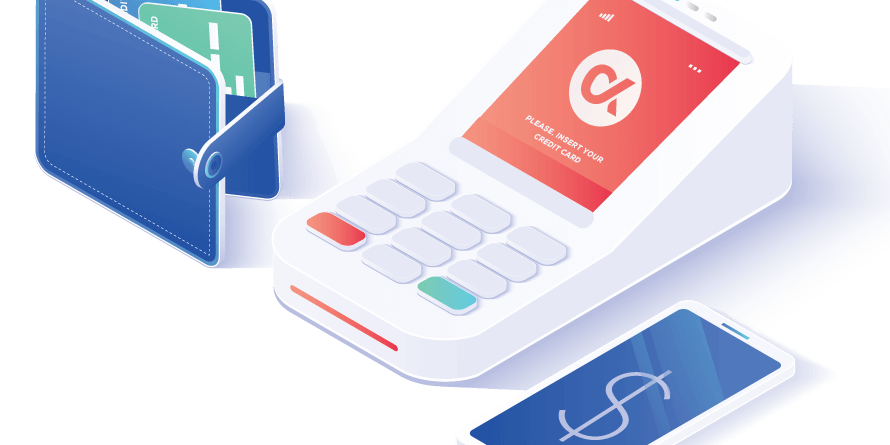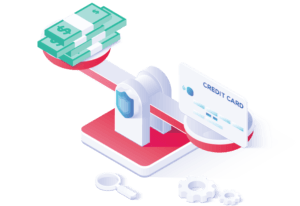Going Cashless
A 2018 global payments report by the consulting and technology services firm Capgemini predicts that non-cash transactions will accelerate at a compound annual growth rate of 12.7% by the year 2021. Sweden leads this trend, with only 13% of Swedes claiming they used cash to make purchases in 2018, which is significantly less than the 40% who said they used cash in 2010. The use of cash and checks to pay for goods and services in the United States is dropping, too. A 2019 study conducted by Harvard Business School in collaboration with financial services provider Square reported that in the United States, digital payments accounted for over 961 million dollars and that an annual projected growth rate of 8.6% could push that figure to near $1.3 billion by the year 2023!
No Cash. No Problem?
Online shopping, credit and debit card transactions, and the increased popularity of person-to-person payment apps are on the rise as consumers all around the globe embrace mobile and digital forms of payment over cash. There was a time when people considered using a credit card only to make large purchases or to cover an emergency when they didn’t have enough cash. But now, consumers are just as likely to use plastic to pay for small, everyday purchases (like a sandwich) as they are to buy an expensive home theatre system. In the same 2019 Harvard study mentioned above, research showed that between 2015 and 2019, the use of cash for purchases under $20 dropped from 46% to 37%, and the trend is likely to continue.
As more and more businesses and municipalities head down the no-cash path, the benefits—and drawbacks—of doing so loom large. On the surface, choosing a digital payment system over hard currency seems like a convenient, efficient way to make purchases. But there’s a lot more to it than just a choice of “paper or plastic.” This article explores some of the ways the non-cash trend affects both consumers and businesses alike.
The Good, The Bad, and The Frustrating
First, the positive aspects of going cashless. For businesses, especially retail stores and food establishments, electronic payments save time and effort it takes to handle cash transactions.
- The checkout process is faster when customers don’t have to hand over cash, then wait for the cashier to count out their change.
- Improved security features, like EMV chip cards for card-present transactions and 3D Secure 2.0 technology for card-not-present transactions, make electronic payment processing safe and secure.
- No more reconciling the cash drawer between shifts and at the end of the day.
- No more daily trips to the bank to deposit the day’s receipts.
- Having no money on the premises makes a business less vulnerable to theft by employees or violent robbery.
- Less chance for money laundering and tax evasion because there’s a record of every electronic transaction.
Now for some of the not-so-positive aspects of going cashless. Convenience and security aside, non-cash transactions can pose a few challenges for businesses and consumers alike.
- Without proper point-of-sale security measures in place, cardholder data can be hacked and stolen during a transaction.
- Retail, medical, and financial websites that store sensitive personal information are at risk of data breaches.
- Many “unbanked” or “underbanked” consumers do not qualify for branded credit cards or bank debit cards, and rely solely on cash to pay for housing, food, and utilities.
- Although mobile payments are gaining popularity, not everyone can afford the high cost of smartphones that support mobile wallets, leaving less affluent customers who can only pay with cash or checks at a disadvantage.
- Businesses that only accept electronic payments risk losing customers who prefer paying with cash.
- A banking website experiencing technology issues can prevent customers from accessing their money when they need it.
What Does This Mean for Businesses Owners?
Cash isn’t going away any time soon, so businesses need to carefully weigh the pros and cons of whether to stop accepting cash payments. But regardless of how business owners decide to handle cash transactions, one thing is clear: As the trend toward non-cash transactions accelerates, merchants need to be ready to accept and process all types of digital payments.
Want to Accept Cashless Payments?
Your customers expect to have multiple options available to pay for purchases, so offering them the ability to pay however they want is your key to boosting sales and increasing profits. With robust, flexible processing solutions and industry-leading features, Cardknox is well-positioned to take advantage of the move away from cash.
Integrating with Cardknox makes it easy for businesses to accept all the following payment types:
- ACH payments
- Credit cards, including American Express, Diners Club, Discover, JCB, Mastercard, and Visa
- Debit cards
- Electronic benefit transfer (EBT) payments
- Gift cards
Don’t miss out—contact us today!



